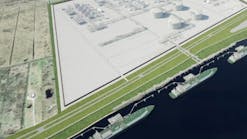PHMSA’s pipeline safety enforcement could be better, House panel told
The US Pipeline and Hazardous Materials Safety Administration needs more resources to do a better job enforcing federal pipeline safety regulations, oil and gas industry witnesses told the US House Energy and Commerce Committee’s Energy Subcommittee on June 19.
Federal pipeline safety reauthorization legislation also should provide better tools for operators to test and implement new technology and not make them follow procedures which are decades old in some cases, they said.
“A 99.999% success rate means we have tackled the easy problems. All the low hanging pipeline safety fruit has been picked,” Association of Oil Pipe Lines Pres. Andrew J. Black said. “We believe technology and innovation offer opportunities to close the remaining gap in pipeline safety. Technology will allow us to find the smallest of issues much earlier than before.”
New best practices will provide the analytical tools and modeling to predict issues farther into the future and allow more time for maintenance to keep pipelines operating safely, he said in his written testimony. “Pipeline operators want to put these new technologies and practices to work to the benefit of pipeline safety, but PHMSA regulations are holding us back,” Black said.
Interstate natural gas pipeline operators continue to incorporate new technologies and advanced engineering practices that enhance their systems’ safety performance, a second witness noted.
Rules haven’t kept pace
“However, many PHMSA regulations were created decades ago and are outdated. While these regulations reflect the technology and best approach available at the time, they have not kept pace and now hinder pipeline operators in implementing 21st Century pipeline safety programs,” said C.J. Osman, the Interstate Natural Gas Association of America’s operations, safety, and integrity director.
Osman said INGAA supports PHMSA’s legislative proposal to implement a new pipeline safety technology pilot program. “One of the last steps in confirming whether a new technology is beneficial is to test it in real-world conditions. A transparent, supervised pilot program would allow PHMSA to develop field data that could then be used to support potential changes to the regulations,” Osman explained in his written testimony.
Funding for pipeline safety pilot programs should expand to intrastate transmission and distribution pipelines, said a third witness, Christina Sames, operations and engineering vice-president at the American Gas Association.
“Limiting research and development and pilot programs to only interstate transmission pipelines will prevent research and innovation opportunities and will inadvertently narrow the focus of safety, efficiency, and secure transportation to only a portion of the country’s pipeline infrastructure,” she warned.
Distribution systems’ share
Currently, the nation’s gas distribution pipelines have seven times more mileage than the country’s interstate transmission systems, Sames said in her written testimony. “Failing to include distribution systems in pilot programs will significantly overlook an opportunity for all of the nation’s natural gas and liquid pipeline infrastructure,” she suggested.
A fourth witness emphasized the continuing importance of protecting communities and rural property owners near pipeline routes. “PHMSA is chronically underfunded given the vast network of pipelines in our country and the risk they represent to public safety and the environment,” said Chuck Lesniak, a principal in CL3 Consulting in Austin who testified on behalf of the Pipeline Safety Trust.
“While in past reauthorizations PHMSA has been given more money for inspectors, additional money in this legislation hopefully will provide an opportunity to also help cover the needed costs of support staff to better analyze data, review risks, and support PHMSA’s regulatory and enforcement functions,” he suggested in his written testimony.
Proposed changes also could bring under federal regulation “many of the hundreds of thousands of miles of entirely unregulated gathering lines running near homes and businesses in more rural areas,” Lesniak continued. “PHMSA estimates there to be more than 435,000 miles of these pipelines and as production and gathering continue to increase, it's important that these rural pipelines fall under minimum regulations to keep communities safe so regulators know when and why they fail, and that [the pipelines] participate in one-call systems.”
Some Republican members of the subcommittee said PHMSA Director Howard (Skip) Elliott or another official from the US Department of Transportation agency should have been invited to testify. They also said the bill and discussion draft which were being considered were unusually partisan for legislation which both Republicans and Democrats have supported in the past. A few Democrats said it was equally essential that individuals and organizations retain the right to sue if they consider a new regulation unreasonable or inadequate.
Contact Nick Snow at [email protected].

Nick Snow
NICK SNOW covered oil and gas in Washington for more than 30 years. He worked in several capacities for The Oil Daily and was founding editor of Petroleum Finance Week before joining OGJ as its Washington correspondent in September 2005 and becoming its full-time Washington editor in October 2007. He retired from OGJ in January 2020.


